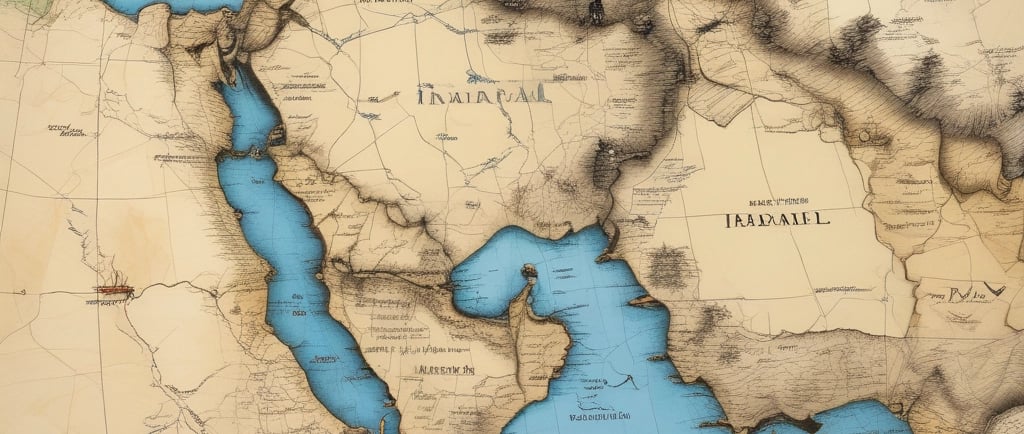Israeli Drones Used in Operation “Rising Lion” Against Iran: A Strategic Overview
Iran Israel War
6/30/20253 min read


Introduction
In the ongoing covert conflict between Israel and Iran, Operation Rising Lion marked a significant escalation in drone warfare. According to defense analysts and leaked sources, Israel employed a sophisticated array of unmanned aerial vehicles (UAVs) to conduct long-range precision strikes deep inside Iranian territory. These drone operations targeted radar installations, air defense systems, and strategic military infrastructure.
This article provides a detailed look at the types of drones used by the Israel Defense Forces (IDF) during the operation and the strategic objectives they served.
Key Israeli Drones Used in Operation “Rising Lion”
IAI Harop (Harpy 2)
The Harop is a loitering munition developed by Israel Aerospace Industries (IAI). Designed as a “kamikaze” drone, it can loiter in the target area before diving into high-value targets. Harops are especially useful for taking out radar systems and mobile missile launchers.Range: Over 1,000 km
Payload: High-explosive warhead
Target Type: Enemy radar systems, air defense batteries
Operation Use: Believed to have neutralized Iranian S-300 systems and anti-aircraft radars in Isfahan and Natanz.
Elbit Systems Hermes 900
A medium-altitude long-endurance (MALE) drone, the Hermes 900 was likely used for surveillance, electronic warfare (EW), and coordination of strike packages. It is a versatile drone used in various reconnaissance and combat support roles.Range: 1,000+ km
Endurance: 30–36 hours
Payloads: EO/IR sensors, EW pods, laser designators
Operation Use: Real-time ISR (Intelligence, Surveillance, Reconnaissance) during deep strikes and battle damage assessment.
IAI Eitan (Heron TP)
The Eitan, one of Israel’s most powerful UAVs, played a vital role in long-range operations. Capable of flying at high altitudes for extended periods, it likely provided strategic surveillance and electronic warfare support over Iranian airspace.Wingspan: 26 meters
Endurance: 36 hours
Payload: Up to 1,000 kg including SAR, EO/IR sensors, EW pods
Operation Use: Command and control relay, strategic surveillance.
IAI Harpy
The predecessor to the Harop, the Harpy is specifically designed to seek out and destroy radar emitters by homing in on their electromagnetic signals.Range: 500 km
Specialization: SEAD (Suppression of Enemy Air Defenses)
Operation Use: Early wave suppression of Iranian air defense radars before follow-on strikes.
Tactical Micro UAVs (Such as SkyRider)
Though primarily used for tactical operations and ground unit support, some reports suggest that small drones like the SkyRider were deployed near the borders of Iran for border monitoring and forward reconnaissance.Use: ISR and coordination with special forces or sabotage teams.
Strategic Objectives of the Drone Use
Israel’s use of drones in Operation Rising Lion was multifaceted:
Preemptive Neutralization: The drones targeted Iranian early-warning and radar systems to blind their air defense networks ahead of potential follow-on airstrikes.
Covert Warfare: The UAVs allowed deep strikes without risking manned aircraft or direct IDF presence, giving Israel deniability and flexibility.
Electronic Warfare and Reconnaissance: Drones provided vital real-time battlefield intelligence and electronic jamming support.
Deterrence and Message: The operation also served to demonstrate Israel’s capability to reach deep into Iran with impunity, showcasing technological superiority.
International Response and Iranian Reaction
Iranian state media initially downplayed the extent of the strikes but later acknowledged that several strategic military installations were affected. Some sources within Iran claimed that Israeli drones had evaded multiple layers of defense due to their low radar signature and electronic warfare support.
The international community reacted with concern, warning about the risk of escalation. However, many defense experts have pointed out that the use of drones in this context represents a growing global trend of remote, precise, and deniable warfare.
Conclusion
The deployment of advanced UAVs in Operation Rising Lion underlines Israel’s doctrine of preemptive deterrence and its reliance on cutting-edge drone technology for long-range surgical strikes. With drones like the Harop and Eitan, Israel has not only managed to strike critical targets within Iran’s defense infrastructure but also reshaped the future of asymmetric warfare in the Middle East.
As tensions between Israel and Iran continue to simmer, the skies over the region are likely to remain crowded—not with fighter jets, but with unmanned emissaries of strategic conflict.
References
Jane’s Defence Weekly (2025) – "Israeli UAV Capabilities in Regional Conflicts"
IAI Official Website – www.iai.co.il
Elbit Systems Product Brochure – Hermes Family
Defense News – "Inside Operation Rising Lion: A Look at the Drones Striking Iran"
Haaretz (April 2025) – "Israel’s Use of Loitering Munitions in Iran: An Analysis"
Would you like a Somali translation or a version formatted for publishing on a website or newspaper?
